The Two Sounds of TH: Voiced vs. Voiceless
This post may contain affiliate links. As an Amazon affiliate, we earn from qualifying purchases.
The digraph TH can represent two different sounds: one voiced and one voiceless. This subtle difference between the two sounds can change both how a word sounds and what it means. Keep reading to learn more about this. Then, get a free printable for students to practice.
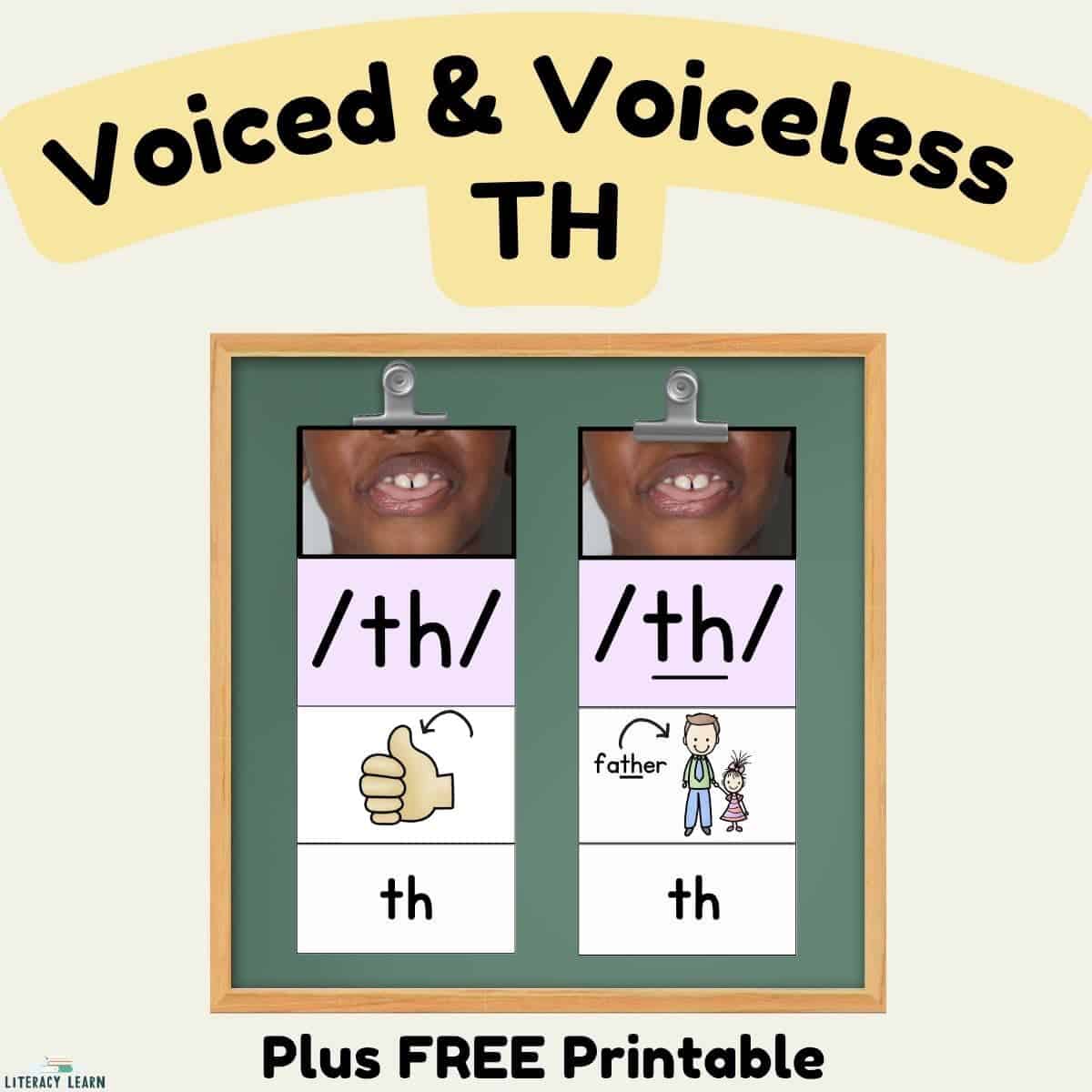
The Sounds of Digraph TH
There are 44 phonemes (individual speech sounds) in English, and each one is either voiced or voiceless, depending on whether the vocal cords vibrate during production.
➡️ The digraph th is unique because it represents two sounds: One is voiced and one is voiceless, also known as unvoiced. These are separate and distinct phonemes, even though they are spelled the same way.
The voiced sound of th is heard if you isolate the /th/ sound in father. The voiceless sound of th is heard if you isolate the beginning sound in thumb.
Voiced and Voiceless TH
Both sounds of th are produced by placing the tongue between the teeth and blowing air out. The key difference lies in voicing – whether the vocal cords are vibrating or not.
🔊TH represents the voiced sound in the words the, this, and father, and smooth. If you isolate the /th/ sound in these words and place your hand on your voice box, you’ll feel a vibration. Try it!
Voiced TH = Vibration in your vocal cords.
🔇TH represents the voiceless sound in the words thin, thick, and author, and teeth. If you try these and place your hand on your throat, you won’t feel any movement – just air. Try it!
Voiceless TH = No vibration, just air.
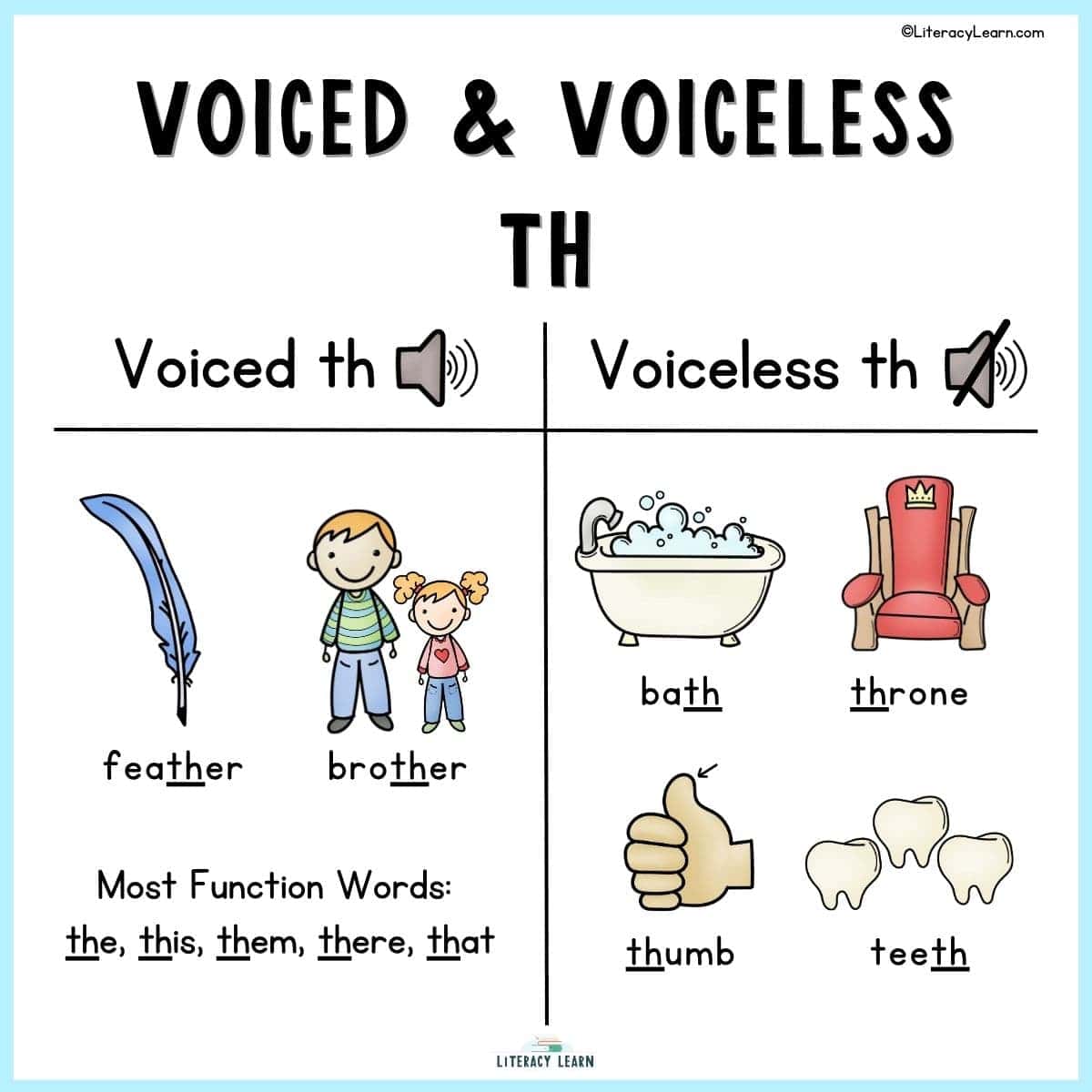
➡️ Read our article about voiced and voiceless sounds to learn a LOT more! And while you’re at it, read about some fun voiced and voiceless activities, too!
Examples of Voiced and Voiceless TH Words
Below is a chart organized with 32 words that include digraph th, organized by voiced and unvoiced sounds. Read the words in each column and listen for the differences!
| VOICED /TH/ 🔊 | VOICELESS /TH/ 🔇 |
| this | thumb |
| that | thin |
| them | bath |
| then | math |
| there | teeth |
| those | path |
| though | think |
| either | thank |
| another | thump |
| feather | throne |
| brother | thorn |
| mother | throw |
| father | thick |
| smooth | three |
| soothe | thread |
| teethe | thrift |
Can you hear and feel the differences between the words with voiced and unvoiced /th/ sounds?
More about Digraph TH
While there aren’t consistent rules for th like there are for other concepts (like Soft C and G or C vs K), there are a few helpful patterns and generalizations that determine whether or not the sound is voiced or voiceless in a word.
1. When the th is followed by a final silent E, the /th/ is voiced.
👉 Examples: teethe, bathe, clothe, breathe, loathe
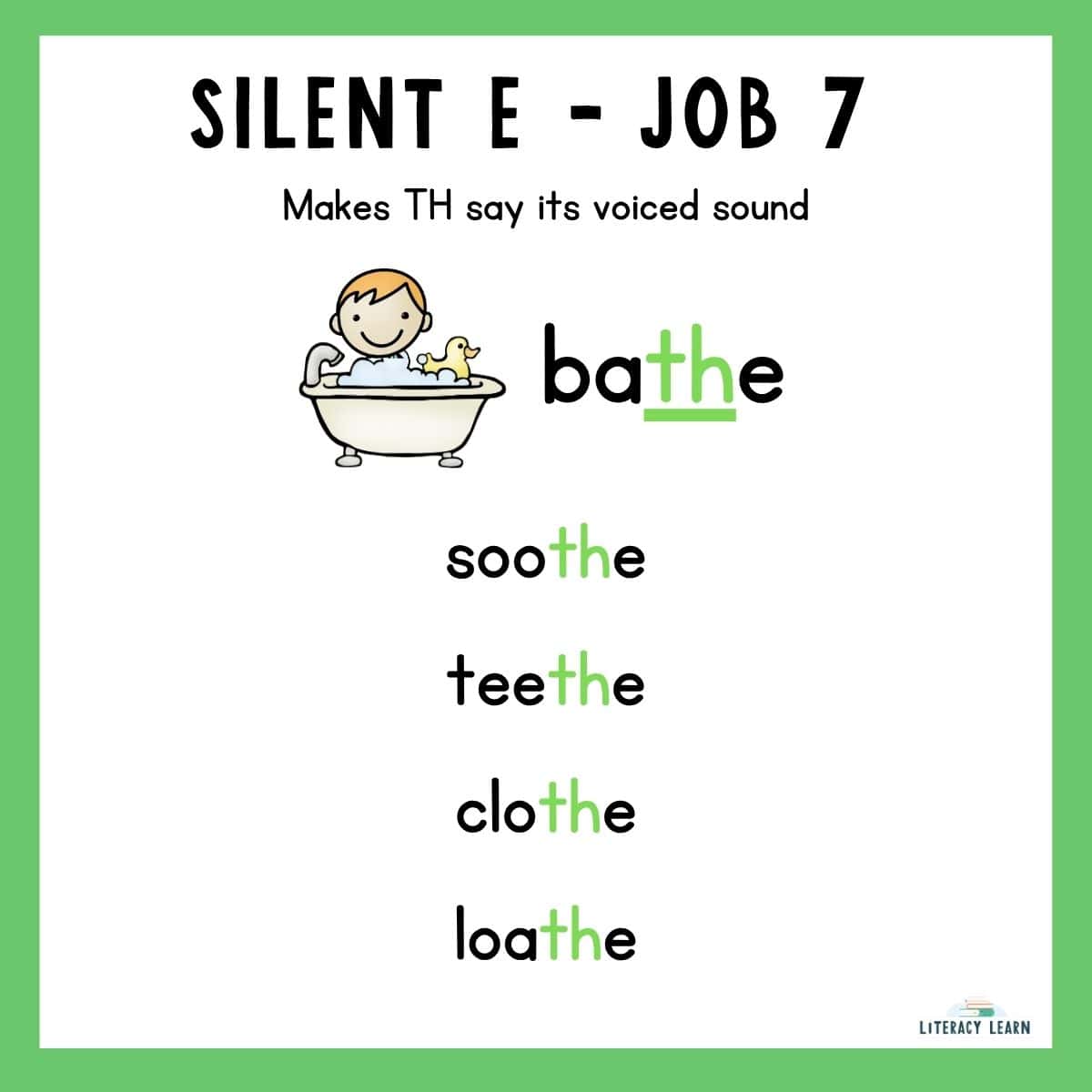
2. Almost all function words begin with the voiced /th/ sound.
👉 Examples: the, then, that, there, though, these, them
3. When the /th/ is between two vowels, the /th/ is usually voiced.
👉 Examples: rather, other, mother, father, feather
4. When the base word ends with /th/, it is usually voiceless.
👉 Examples: teeth, bath, cloth, breath
*Note: If suffixes are added, then the /th/ sound might become voiced. See how the south of th changes when a suffix is added in the words below (and sometimes the vowel sound changes, too!)
- teeth → teething
- bath → bathed
- cloth → clothed
- breath → breathing
While there are some patterns in how voiced and voiceless TH are used, most of these “rules” don’t need to be explicitly taught to young children. However, there are a few important concepts that are worth teaching directly.
For example, it’s helpful to show students how:
- Adding a suffix can change the sound of the base word (bath → bathing).
- Final silent E can impact pronunciation (breath vs. breathe)
Teaching Digraph TH
Teaching voiced and voiceless sounds helps kids with phonemic awareness, decoding, and encoding.
The main things students need to know about digraph TH are:
- TH represents two different sounds — and that this changes a word’s pronunciation and meaning (e.g., teeth vs. teethe).
- How to articulate each sound correctly: Voiceless: just air (as in thumb) vs Voiced: vibration (as in father)
Other teaching tips:
- When decoding, teach kids that may need to try both sounds for correct pronunciation. This helps encourage flexibility, self-correction skills, and oral language awareness.
- Use consistent anchor words and pictures for each sound: Voiceless th – thumb 👍& Voiced th- father 👨👩👧👦
- Teach kids to “Test the Sound” by placing their hand on their voice box to feel for vibration or no vibration.
- Encourage the use of individual mirrors for visual support.
- Definitely use a sound wall for support.
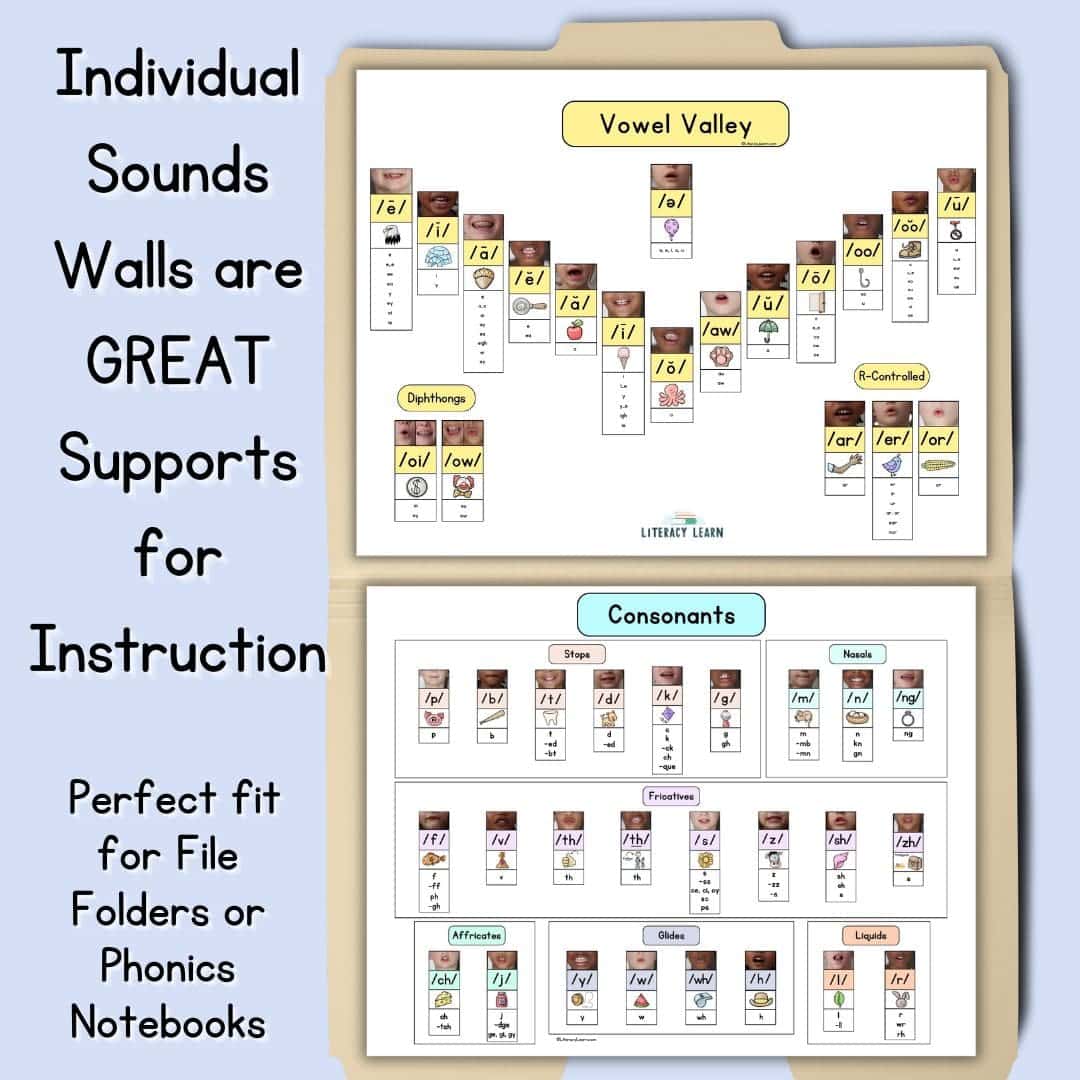
Students will need clear teacher instruction and modeling of this concept, followed by supported practice using targeted voiced and voiceless activities.
Digraph TH Worksheet
We’re giving you a worksheet to help kids practice identifying the voiced or voiceless th sounds in words.
Instructions:
- Read each word on the list carefully.
- Say the word out loud and pay close attention to the /th/ sound. Segment each individual speech sound, if necessary. Place your fingers on your throat as you say the /th/ sound in each word. If you feel a vibration, it’s voiced. If not, it’s voiceless!
- Decide if the /th/ sound is voiced (your vocal cords buzz) or voiceless (no buzz).
- Color:
- Voiced /th/ words RED
- Voiceless /th/ words BLUE
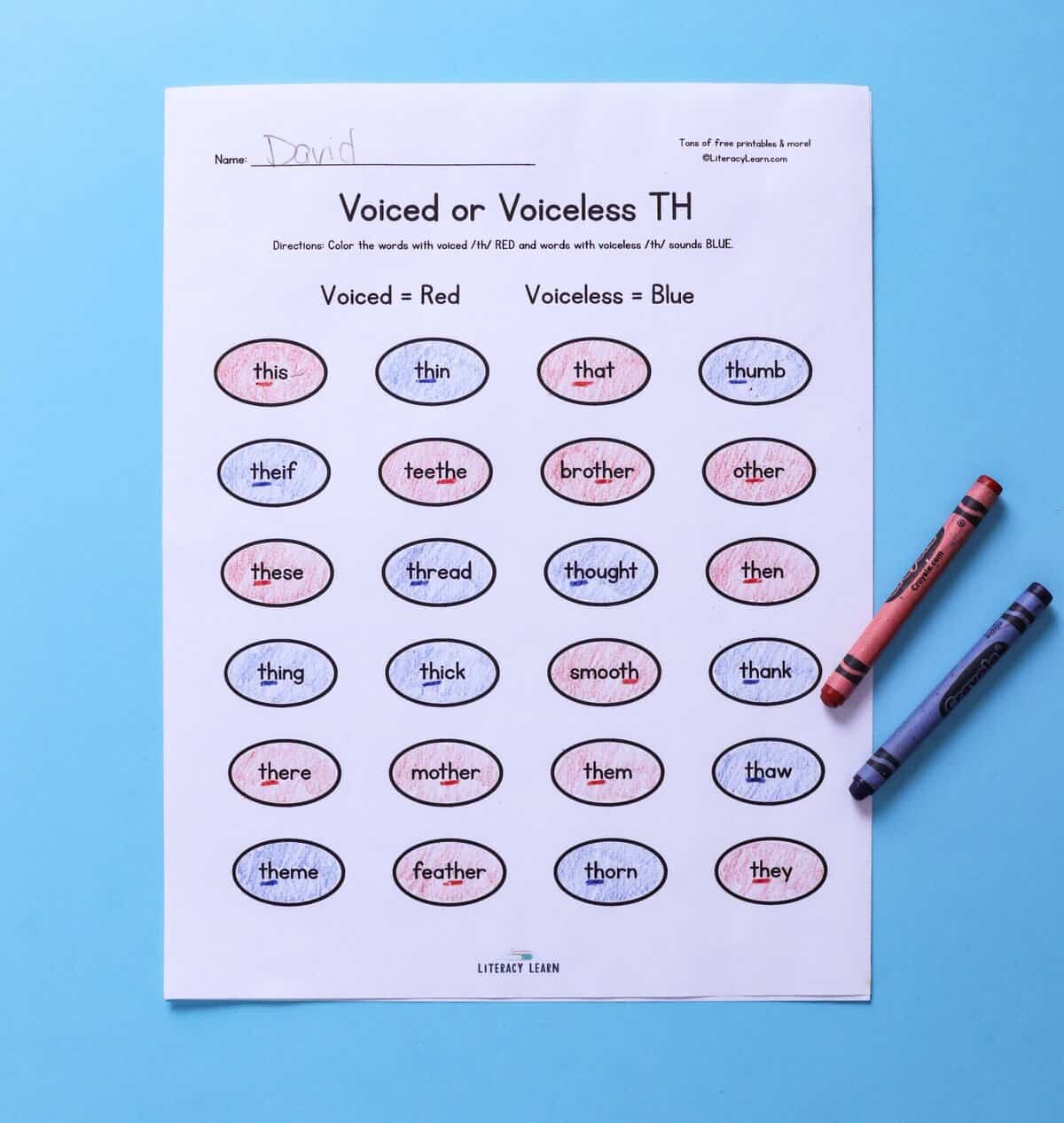
This activity is best as a teacher directed activity, since some of the words include phonics concepts younger kids haven’t been taught.
Related Resources
- 30 Best Tips for Teaching Letters & Sounds
- Differences Between Vowels and Consonants
- Alphabet Bundle
- Voiced and Voiceless Phoneme Sorting & Practice Activities (pictured below)
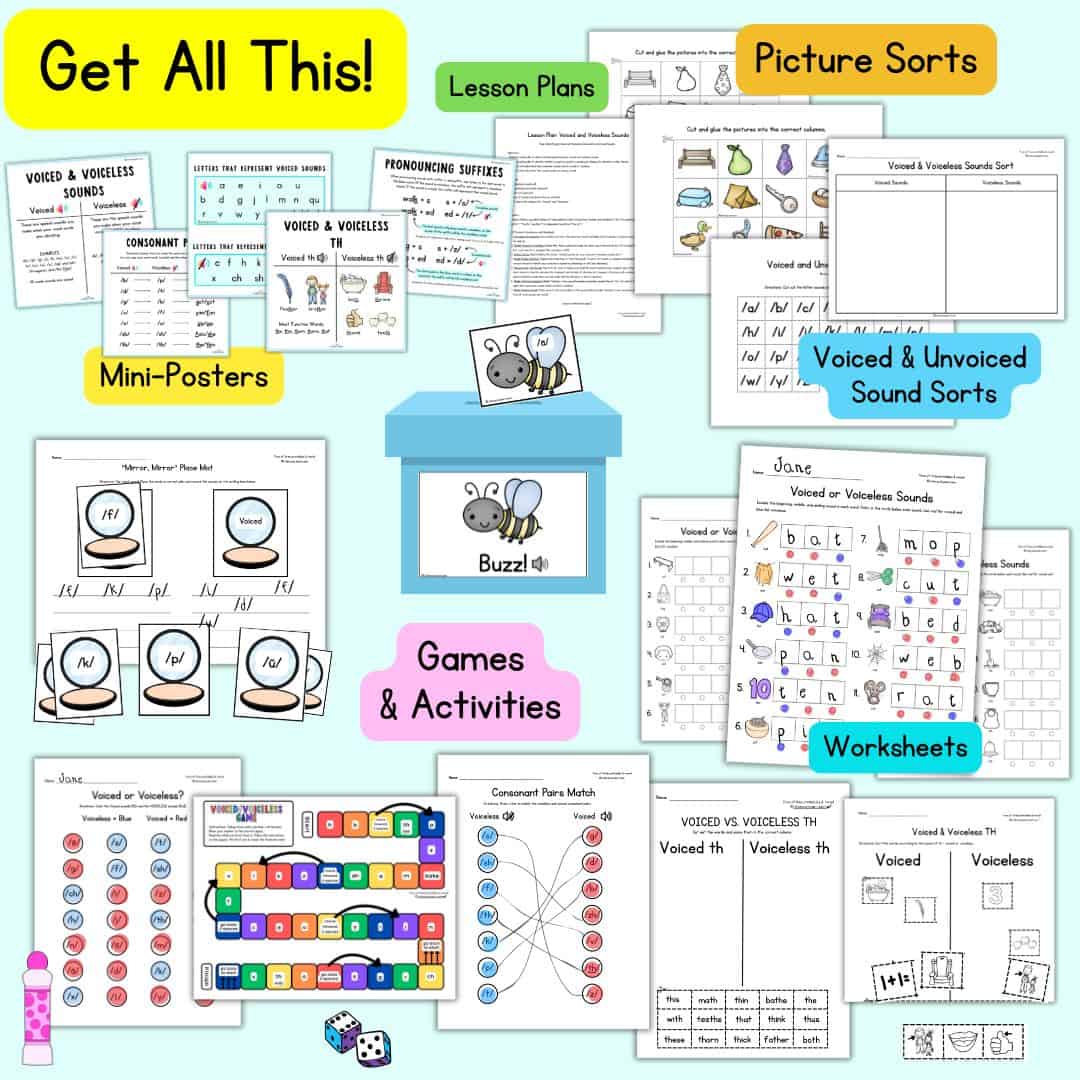
Download & Print
DOWNLOAD TERMS: All of our resources and printables are designed for personal use only in homes and classrooms. Each teacher must download his or her own copy. You may not: Save our files to a shared drive, reproduce our resources on the web, or make photocopies for anyone besides your own students. To share with others, please use the social share links provided or distribute the link to the blog post so others can download their own copies. Your support in this allows us to keep making free resources for everyone! Please see our Creative Credits page for information about the licensed clipart we use. If you have any questions or concerns regarding our terms, please email us. Thank you!
Related FREEBIE: Voiced & Voiceless Sounds Worksheet.


Appreciate your website and resources so much. Very helpful for my teaching in Thailand. Just downloaded the Voiced/Voiceless TH worksheet and noticed that thief is misspelled. Could that be corrected and uploaded again? Thank you so much.
Hi Susie,
It’s been updated! Thank you for letting us know 😉
Katie and Laura